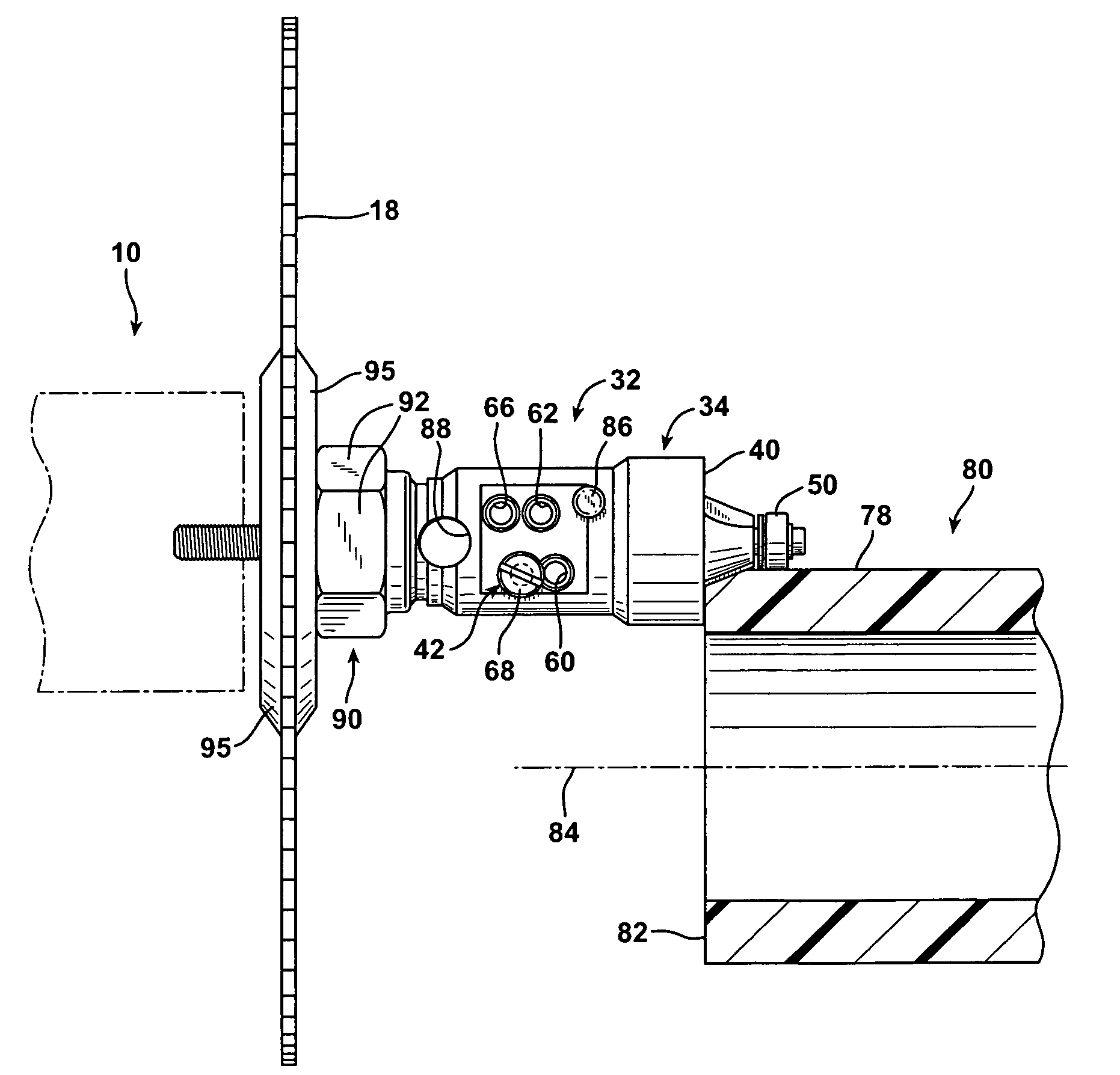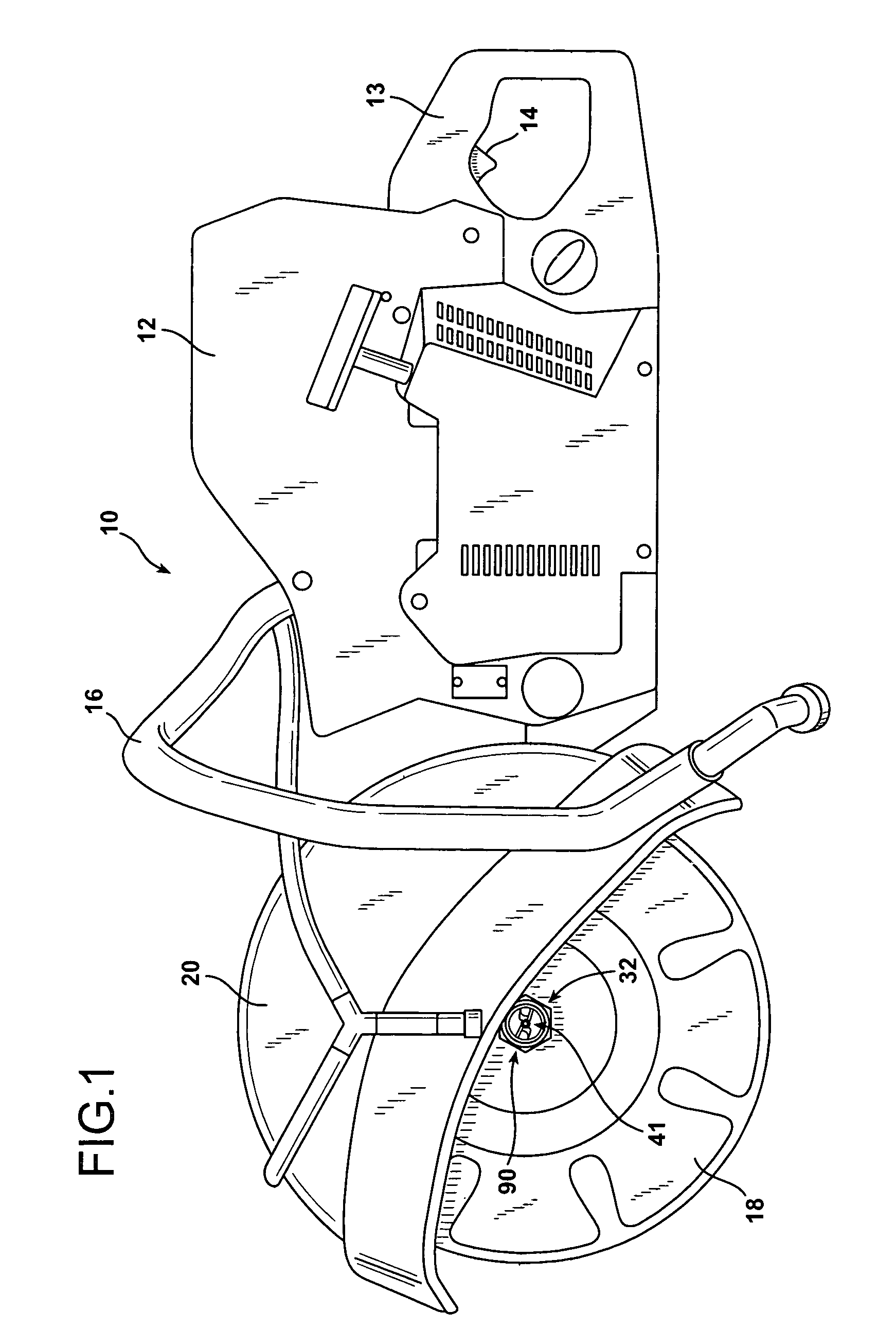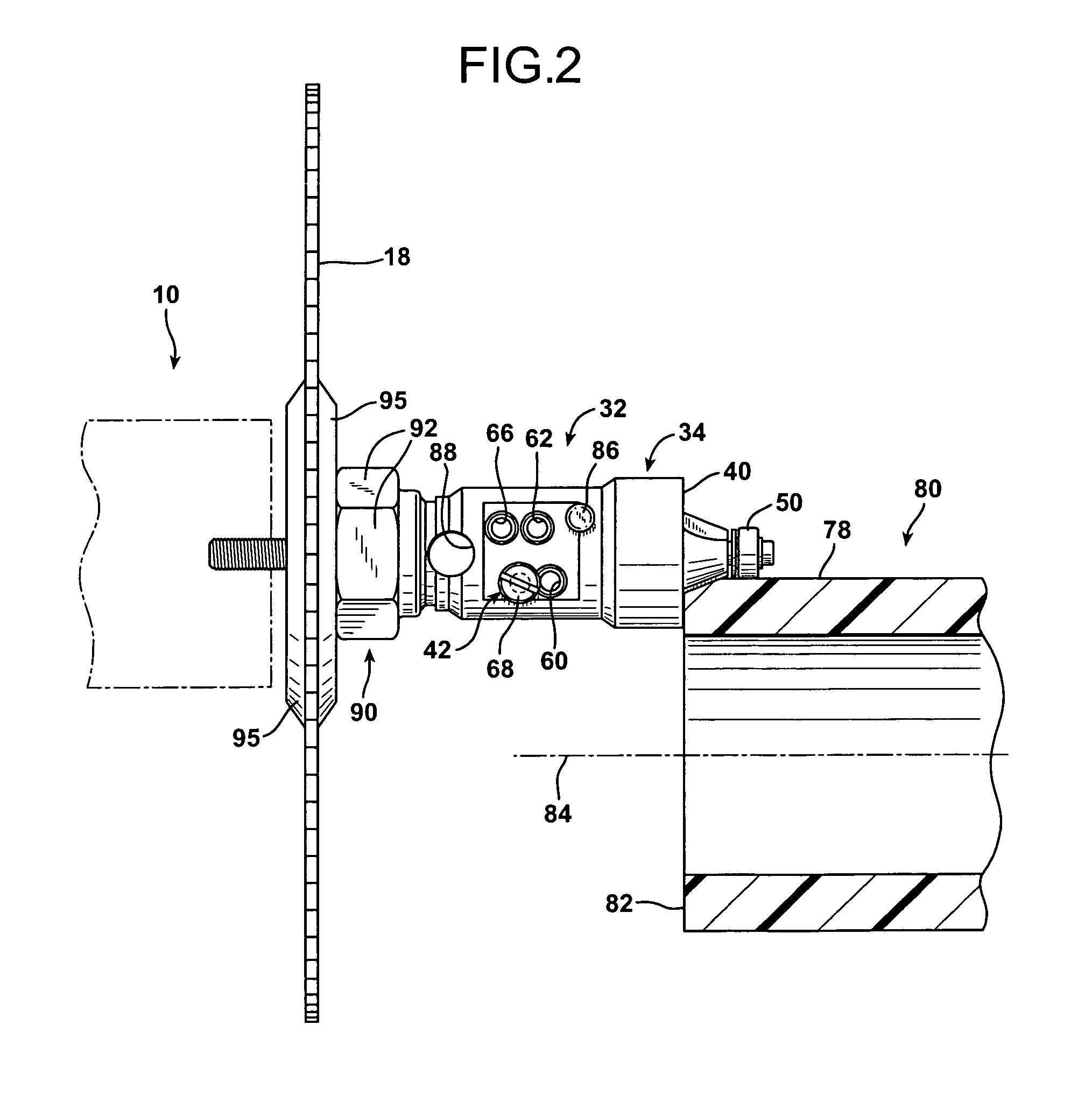Pipe beveling system
a beveling system and pipe technology, applied in the field of beveling systems, can solve the problems of difficult manual holding of the saw, o-ring damage, and excessive resistance, and achieve the effects of convenient operation, quick and easy change, and simple operator adjustmen
- Summary
- Abstract
- Description
- Claims
- Application Information
AI Technical Summary
Benefits of technology
Problems solved by technology
Method used
Image
Examples
Embodiment Construction
[0040]FIG. 1 illustrates a pipe cutting saw indicated generally at 10 having a small gasoline powered engine in the body area 12, a rear handgrip 13 housing a trigger 14, a front stabilizing handgrip 16, and a pipe cutting blade 18 partially surrounded by a protective blade guard 20. In addition, a pipe beveling tool 32 according to the invention is attached to the pipe cutter 10 for coaxial rotation with the sawblade 18 by means of an elongated arbor bolt 33, which is visible in FIG. 4.
[0041]The pipe beveling tool 32 and its connection to the pipe cutting saw 10 is illustrated in greater detail in FIGS. 2 and 4. As illustrated in the drawing figures, the beveling tool 32 is comprised of a hollow, barrel-shaped tubular body 34 having a central, longitudinal axis of rotation 36, an inboard end 38, and an opposite, outboard cylindrical annular end 40. The pipe beveling tool 32 is also comprised of a core member 41 and a latching pin in the form of an adjusting screw 42.
[0042]The core ...
PUM
| Property | Measurement | Unit |
|---|---|---|
| longitudinal distances | aaaaa | aaaaa |
| rotation | aaaaa | aaaaa |
| diameter | aaaaa | aaaaa |
Abstract
Description
Claims
Application Information
 Login to View More
Login to View More - R&D
- Intellectual Property
- Life Sciences
- Materials
- Tech Scout
- Unparalleled Data Quality
- Higher Quality Content
- 60% Fewer Hallucinations
Browse by: Latest US Patents, China's latest patents, Technical Efficacy Thesaurus, Application Domain, Technology Topic, Popular Technical Reports.
© 2025 PatSnap. All rights reserved.Legal|Privacy policy|Modern Slavery Act Transparency Statement|Sitemap|About US| Contact US: help@patsnap.com



